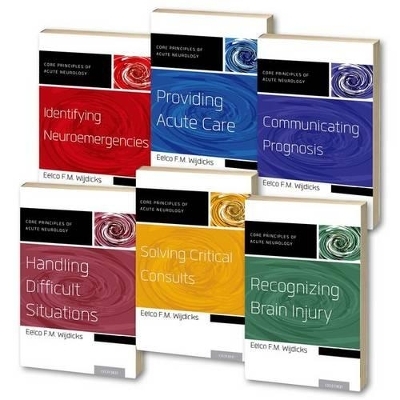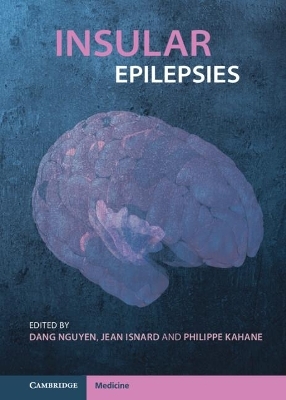
Core Principles of Acute Neurology 6-Volume SET
Oxford University Press Inc
978-0-19-046499-8 (ISBN)
- Titel ist leider vergriffen;
keine Neuauflage - Artikel merken
1. "Recognizing Brain Injury " illustrates how to recognize the consequences of acute brain injury and the treatment of its consequences
2. "Providing Acute Care " discusses medical care of acutely hospitalized neurologic patients in all its aspects
3. "Handling Difficult Situations " provides solutions for acute neurologic dilemmas.
4. "Communicating Prognosis " is written for the neurohospitalist and neurointensivist to best communicate with the family of neurologically injured patient
5. "Identifying Neuroemergencies " provides practical information on how to best manage and triage patients in the first hour of admission in the Emergency Department
6. "Solving Critical Consults " is the go-to resource for practical information on how to evaluate complicated neurology consults in the ICU.
Written specifically for neurologists, neurosurgeons, residents, fellows, emergency physicians, neurointensivists, and neurohospitalists, these volumes are comprehensive and have been written and designed by a leading authority on neurocritcal care. Collectively, this SET represents the most systematic and comprehensive guide currently available.
Mayo Clinic Department of Neurology200 First Street SW, Rochester, MN 55905Telephone: (507) 284-2511
Tables of Contents ; Communicating Prognosis ; Chapter 1: Prognostication after Traumatic Brain injury ; Chapter 2: Prognostication after Ischemic or Hemorrhagic Stroke ; Chapter 3: Prognostication of Coma after Cardiac Arrest ; Chapter 4: Prognostication after Brain Injury-Associated Seizure and Status Epilepticus ; Chapter 5: Prognostication after Infections of the Central Nervous System ; Chapter 6: Prognostication Following Acute Neuromuscular Disorders ; Chapter 7: Principles of Neuropalliation ; Chapter 8: The Conversation and Words We Use ; Chapter 9: Withdrawal of Support and Palliation ; Chapter 10: Troubleshooting: Families Who Won't Let Go ; Index ; Handling Difficult Situations ; Chapter 1: Treatable Coma ; Chapter 2: When Seizures Continue ; Chapter 3: Judging Severity of Traumatic Brain Injury ; Chapter 4: Recognition of Acute Spinal Cord Injury ; Chapter 5: Treating Acute Autoimmune Encephalitis ; Chapter 6: Neurosurgical Emergencies in Acute Brain Injury ; Chapter 7: Endovascular Options in Ischemic Stroke ; Chapter 8: Supporting Acute Respiratory Muscle Weakness ; Chapter 9: Emergencies in the Transplant Recipient ; Chapter 10: Troubleshooting: Easily overlooked CT scan Signs ; Index ; Providing Acute Care ; Chapter 1: A Systemic Acute Care Plan ; Chapter 2: Fever Control ; Chapter 3: Acute Pulmonary Syndromes ; Chapter 4: Acute Cardiac Syndromes ; Chapter 5: Nutrition Assessment ; Chapter 6: Fluid and Electrolytes Monitoring ; Chapter 7: Glucose Adjustment ; Chapter 8: Anticoagulation Strategies ; Chapter 9: Antimicrobial Stewardship ; Chapter 10: Troubleshooting: Drug Adverse Effects ; Index ; Recognizing Brain Injury ; Chapter 1: Consequences of Acute Brain Injury ; Chapter 2: Neurology of Intracranial Pressure ; Chapter 3: Neurology of Cerebrospinal Fluid ; Chapter 4: Neurology of Unconsciousness ; Chapter 5: Neurology of Breathing ; Chapter 6: Neurology of Blood Pressure ; Chapter 7: Neurology of Cardiac Function ; Chapter 8: Neurology of Gastroenterology ; Chapter 9: Neurology of the Bladder ; Chapter 10: Troubleshooting: Localization Pearls ; Index ; Identifying Neuroemergencies ; Chapter 1: Defining Neuroemergencies ; Chapter 2: The Unresponsive Patient ; Chapter 3: Major Warning Signs: Headache, Vertigo, Syncope ; Chapter 4: Treating Acute Neurologic Pain Syndromes ; Chapter 5: Treating Movement Disorder Emergencies ; Chapter 6: Triaging Seizures and Spells ; Chapter 7: Triaging Traumatic Head and Spine Injury ; Chapter 8: Triaging Acute Ischemic and Hemorrhagic Stroke ; Chapter 9: Triaging Acute Neuroinfections ; Chapter 10: Troubleshooting: Errors and Misjudgments ; Index ; Solving Critical Consults ; Chapter 1: Consulting in the Intensive Care Unit ; Chapter 2: Acute Confusion in the Critically Ill ; Chapter 3: Encephalopathies of Organ Dysfunction ; Chapter 4: The Postoperative Cardiac Patient ; Chapter 5: Neurologic Urgencies after Vascular Surgery ; Chapter 6: Postcardiac Arrest Support and the Brain ; Chapter 7: Acquired Weakness in the Intensive Care Unit ; Chapter 8: Neurology of Polytrauma ; Chapter 9: Neurooncology Emergencies ; Chapter 10: Troubleshooting: ICU Neurotoxicology ; Index
| Erscheint lt. Verlag | 11.2.2016 |
|---|---|
| Reihe/Serie | Core Principles of Acute Neurology |
| Verlagsort | New York |
| Sprache | englisch |
| Maße | 167 x 236 mm |
| Gewicht | 2098 g |
| Themenwelt | Medizin / Pharmazie ► Medizinische Fachgebiete ► Neurologie |
| Medizin / Pharmazie ► Medizinische Fachgebiete ► Notfallmedizin | |
| ISBN-10 | 0-19-046499-2 / 0190464992 |
| ISBN-13 | 978-0-19-046499-8 / 9780190464998 |
| Zustand | Neuware |
| Haben Sie eine Frage zum Produkt? |
aus dem Bereich


